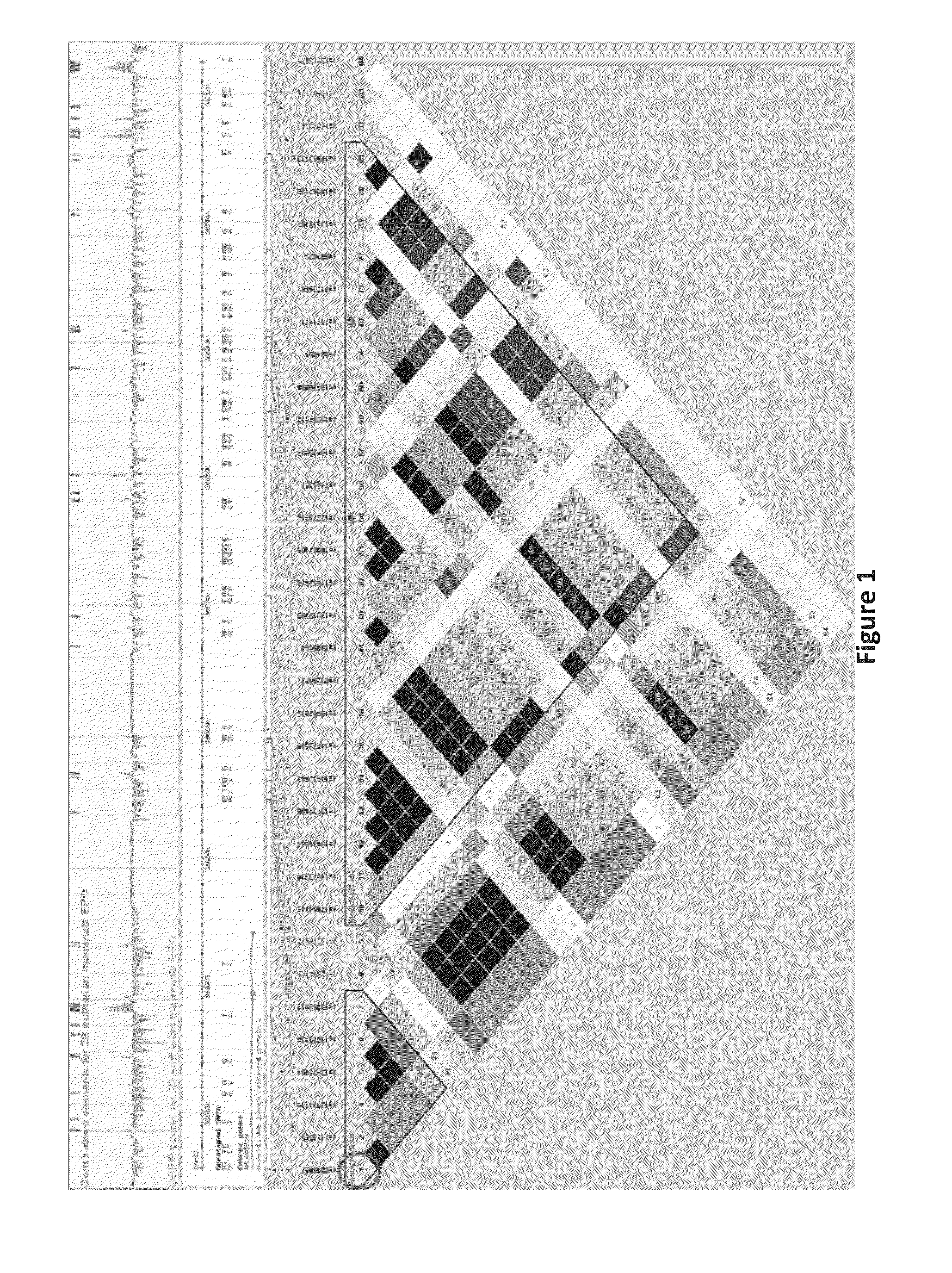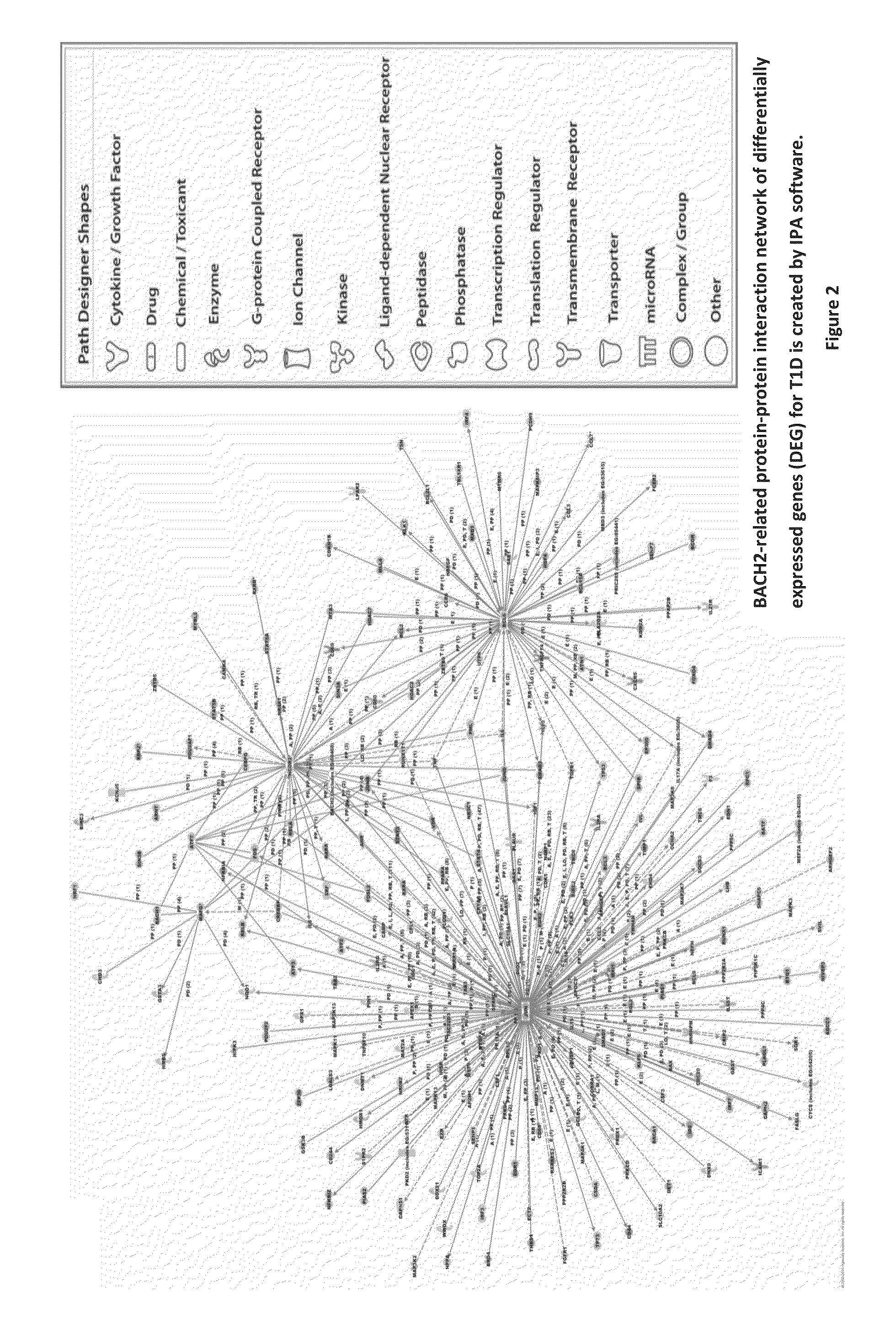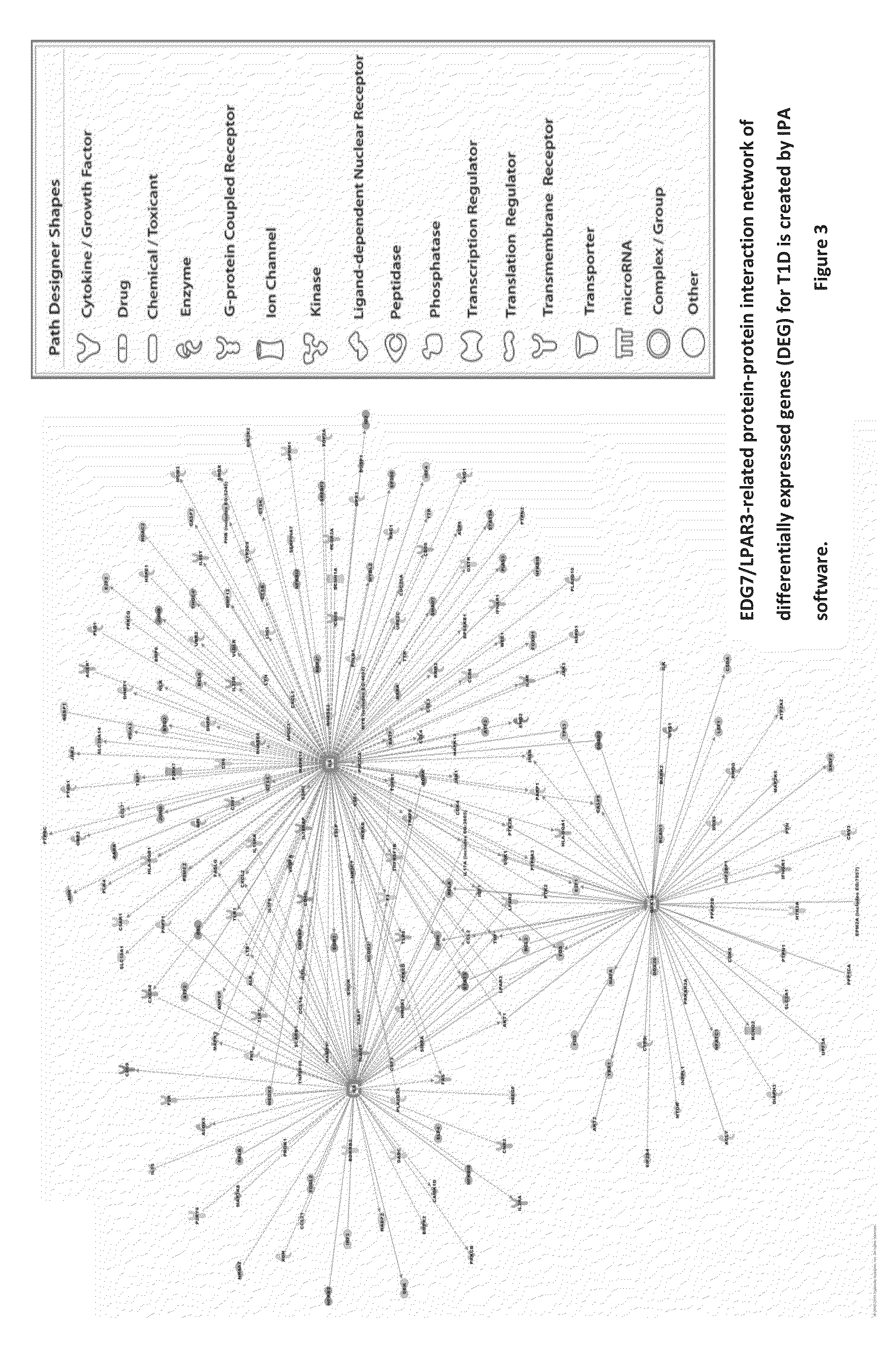Genetic Alterations on Chromosomes 21Q, 6Q and 15Q and Methods of Use Thereof for the Diagnosis and Treatment of Type 1 Diabetes
a technology of chromosome 21q, 6q and 15q, applied in the field of type i diabetes, to achieve the effect of increasing or reducing the risk of t1d
- Summary
- Abstract
- Description
- Claims
- Application Information
AI Technical Summary
Benefits of technology
Problems solved by technology
Method used
Image
Examples
example i
Gentic Loci Associated with Tid
[0132]Type 1 diabetes (T1D) is a multifactorial disease with a strong genetic component that results from autoimmune destruction of the pancreatic β-cells. The major T1D susceptibility locus, mapping to the HLA class II genes at 6p21′ and encoding highly polymorphic antigen-presenting proteins, accounts for almost 50% of the genetic risk for T1D2. Several other loci with more modest effects account for another 10-20% of the risk. These include: (1) the insulin (INS) VNTR3, modulating thymic expression of and tolerance to insulin, a major T1D autoantigen4,5; (2) the Arg620Trp single-nucleotide polymorphism (SNP) at PTPN22, which affects the function of a negative regulator of TCR signaling6; (3) Non-coding SNPs at IL2RA7-9, which encodes the a chain of the IL2 receptor complex (CD25), an important modulator of immunity; (4) variants in the CTLA4 locus10 whose protein product transmits inhibitory signals to attenuate T-cell activation. It is worth noting...
example ii
The Rasgrp1 Locus and T1D
[0167]As described above, we had previously identified a SNP, rs8035957, in the RASGRP1 locus that was associated with T1D. The two genome-wide association studies published by us and by the Wellcome Trust Case-Control Consortium (WTCCC) revealed a number of novel loci.
[0168]In additional studies, we analyzed data from two sources: 1) The previously published second stage of our study, with a total sample size of the two stages consisting of 1,046 Canadian case-parent trios and 538 multiplex families with 929 affected offspring from the Type 1 Diabetes Genetics Consortium (T1DGC); 2) The RR2 project of the T1DGC, which genotyped 4,417 individuals from 1,062 non-overlapping families, including 2,059 affected individuals (mostly sibling pairs) for the 1,536 markers with the highest statistical significance for type 1 diabetes in the WTCCC results.
[0169]One locus, mapping to an LD block at chr15q14, reached statistical significance by combining results from two...
example iii
Diagnostic Methods for T1D and Screening Assays to Identify Therapeutic Agents Useful for the Treatment of T1D
[0193]The information herein above can be applied clinically to patients for diagnosing an increased susceptibility for developing T1D, and therapeutic intervention. A preferred embodiment of the invention comprises clinical application of the information described herein to a patient. Diagnostic compositions, including microarrays, and methods can be designed to identify the genetic alterations described herein in nucleic acids from a patient to assess susceptibility for developing T1D. This can occur after a patient arrives in the clinic; the patient has blood drawn, and using the diagnostic methods described herein, a clinician can detect a SNP in the regions of chromosome 21, 15, 6, 9 and 1 described herein. The typical age range for a patient to be screened is between 9 and 12 years of age. The information obtained from the patient sample, which can optionally be amplif...
PUM
| Property | Measurement | Unit |
|---|---|---|
| size | aaaaa | aaaaa |
| restriction fragment length polymorphism | aaaaa | aaaaa |
| frequency | aaaaa | aaaaa |
Abstract
Description
Claims
Application Information
 Login to View More
Login to View More - R&D
- Intellectual Property
- Life Sciences
- Materials
- Tech Scout
- Unparalleled Data Quality
- Higher Quality Content
- 60% Fewer Hallucinations
Browse by: Latest US Patents, China's latest patents, Technical Efficacy Thesaurus, Application Domain, Technology Topic, Popular Technical Reports.
© 2025 PatSnap. All rights reserved.Legal|Privacy policy|Modern Slavery Act Transparency Statement|Sitemap|About US| Contact US: help@patsnap.com



